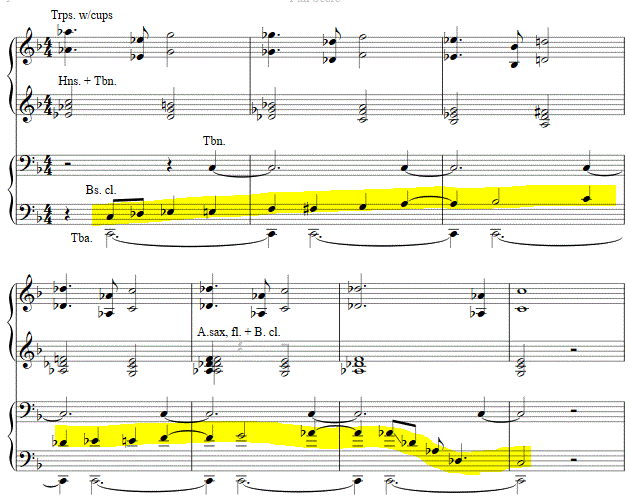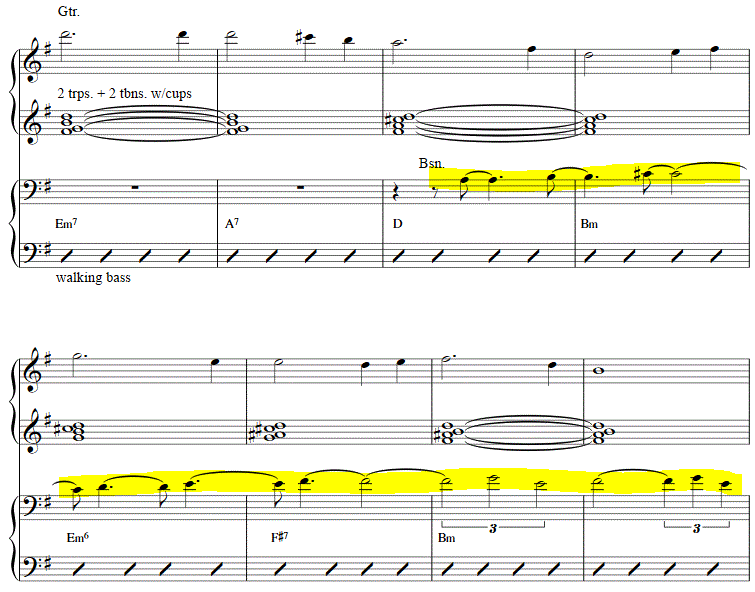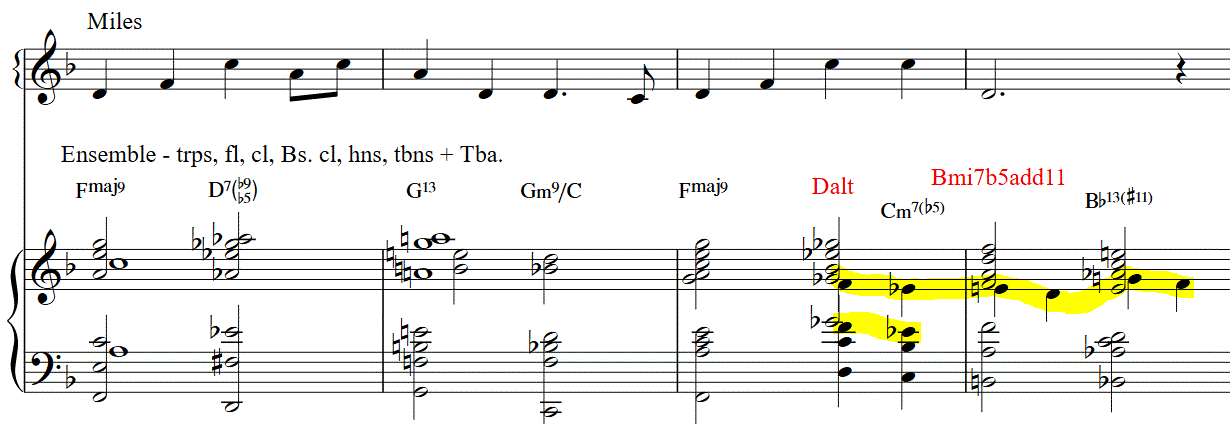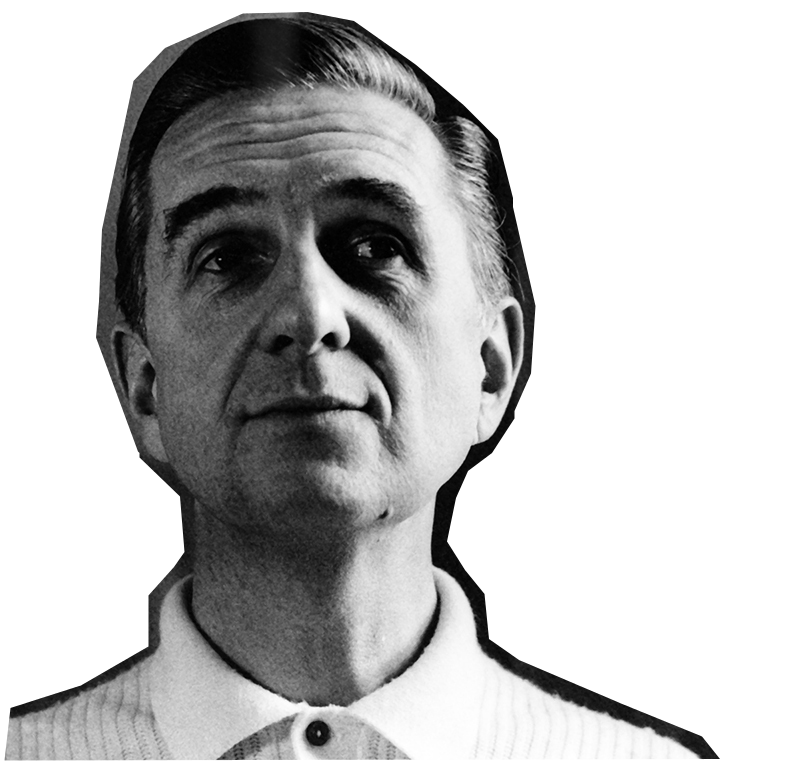Use of counterpoint with inner parts
Gil creates melodies on the inner parts or during long tones to provide interest and forward movement. As with previous counterpoint examples (#1 & #2), each line is interesting on its own and is almost always a self contained melody.
The inner melody will often be played by a contrasting timbre and different rhythm so that it protrudes from the surrounding texture.
Audio examples are below.
My Ship – intro
The rising line from the famous My Ship intro isn’t present in the original. It gives the intro a whole new direction and context. Note how it moves in contrary to the trumpets and horns.

Greensleeves – bar 57
Here is a similar example from the Kenny Burrell album Guitar Forms. This time, the inner part is played by bassoon against a backdrop of cupped brass with a walking bass and Kenny playing the melody. As with the My Ship example, the counterpoint line has a different rhythm from the rest of the ensemble.
Later in the arrangement the same line is played by the low brass against the woodwinds. I’ve included this in the audio example below.

My Ship – 2nd A section
This example is much more subtle, but I think it still qualifies as the inner part moves without the chord changing. The tempo is slow, so the crotchet note movement draws attention against the minims. As with the other examples it helps to push the music forward, especially as Miles’ phrase comes to an end.

There are many more examples to be found throughout My Ship alone. If you haven’t already, check out this analysis of My Ship by David Bennett Thomas
